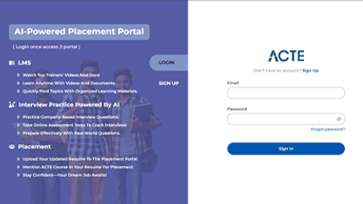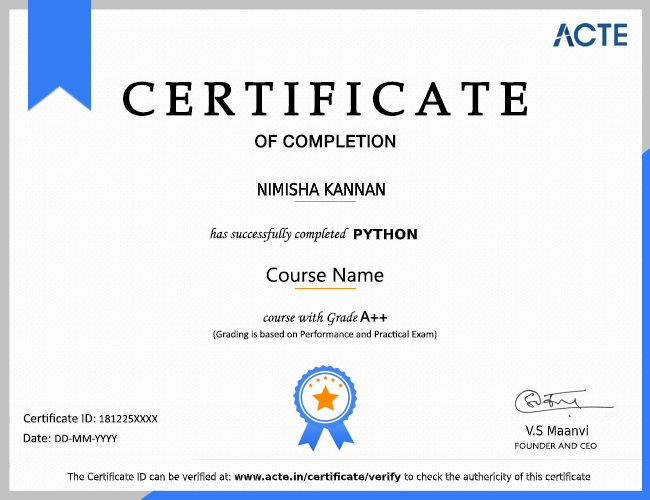Learn the essentials of R, including its syntax, coding, and navigating the interface. How to handle data structures including vectors, matrices, lists, and data frames will be covered in this course. R packages will be explored towards the end, as well as visuals used to construct your own visualisations. There are several hands-on practise sessions, examples to study and interactive code simulations to prepare you for performing your own data analysis using R. For a modest cost, expert trainers develop and deliver our courses.
Additional Info
R's characteristics:
R is a domain-specific programming language designed for data analysis. It has certain distinct traits that make it extremely strong. The vector notation is perhaps the most significant. We may use these vectors to execute a complicated operation on a set of data with a single command. R programming has the following characteristics:
- It is a well-developed, simple and effective programming language.
- It is software for data analysis.
- It is a well-designed, simple, and effective language with features such as user-defined, looping, conditional, and different I/O capabilities.
- It has a consistent and integrated set of tools for data analysis.
- R has a set of operators for performing various sorts of calculations on arrays, lists, and vectors.
- It enables efficient data handling and storage.
- It is a powerful, open-source, and extremely extendable programme.
- It offers extremely adaptable graphics methods.
- It enables us to conduct numerous vector calculations.
- R is an interpretive language.
Why should you use R?
- It is an excellent tool for data analysis, visualisation, data science, and machine learning.
- It includes a variety of statistical methods (such as statistical tests, classification, clustering and data reduction)
- R makes it simple to create graphs such as pie charts, histograms, box plots, scatter plots, and so on.
- It is compatible with a variety of systems (Windows, Mac, Linux)
- It is open-source and free to use.
- It enjoys widespread community backing.
- It contains a large number of packages (function libraries) that may be utilised to address various issues.
Framework and Tools for R:
R, along with Python, is one of the most popular data science tools. R is currently highly sought after by businesses looking for data scientists, thanks to a historically strong open-source development community (R is roughly 25 years old – older than some data scientists). Although R is incredibly strong on its own, there are a few more (crucial) tools that all R users should be aware with. We now have, in no particular order:
RStudio :-
The majority of R users have undoubtedly heard of RStudio. It is by far one of the most popular R tools available, and you most likely already have it. However, that does not stop it from being included here because RStudio is genuinely indispensable. The user interface conveniently provides four quadrants that are required for efficient R work: (upper left) your current file, (upper right) your current workspace, which contains variables and other objects, (lower left) a R console, and (lower right) a window for documentation, graphics, and files. You can even use RStudio to access Git.
lintr:-
Linting is definitely something you've heard of if you're a Python. Linting is a process that evaluates the readability of your code. lintr is a growingly popular R package that allows you to lint your code.
Caret:-
Caret, which can be found on CRAN, is an essential tool in the R toolkit of a data scientist. Caret enables rapid model development, cross-validation procedures, and model performance analysis all in one package. Caret abstracts the different interfaces to user-made algorithms right out of the box, allowing you to quickly construct models ranging from averaged neural networks to boosted trees. It is even capable of parallel processing. Among the most widely used machine learning algorithms are AdaBoost, Decision Trees & Random Forests, Neural Networks, Stochastic Gradient Boosting, closest neighbours, and support vector machines.
Advantages of R:
R is the most widely used statistical modelling and analysis computer language. R, like other programming languages, has benefits.
R has the following advantages:
1) Free and Open Source:-
An open-source language is one that may be used without the requirement for a licence or payment. R is a free and open-source programming language. We can help R evolve by optimising our packages, creating new ones, and addressing bugs.
2) Platform Neutral:-
R is a platform-independent programming language, which implies that its code may run on any operating system. R allows programmers to create applications for several rival platforms by creating a single programme. R runs smoothly on Windows, Linux, and Mac.
3) Machine Learning operations:-
R supports a wide range of machine learning tasks, including classification and regression. R provides a variety of tools and capabilities for creating artificial neural networks for this purpose. R is utilised by the world's top data scientists.
4)Exemplary data wrangling support:-
R allows us to manipulate data. R has programmes such as dplyr and readr that can convert unstructured data into structured data.
5) Plotting and charting of high quality:-
R makes great charting and graphing easier. R packages like ggplot2 and plotly advocate for aesthetically pleasing and aesthetic graphs, which distinguishes R from other computer languages.
6) A array of packages:-
R contains a large number of packages. The CRAN repository for R has over 10,000 packages that are continually being added to. R has packages that may be used for data science and machine learning tasks.
7) Data and statistics:-
R is best recognised as a statistical programming language. It is the primary reason why R is preferred over other computer languages for developing statistical tools.
8) Constant Development:-
R is a programming language that is continually developing. When anything evolves, it changes or develops through time, such as our tastes in music and clothing, which vary as we become older. R is cutting-edge technology that offers updates anytime a new feature is released.
Job Roles and Responsibilities
R Programmer:- The work of R programmers is to utilise their programming abilities to break down data and build tools to help with data analysis. They employ data structures like as vectors, matrices, and data frames to facilitate rapid and efficient development.
Data Scientist:- This is one of the career options available to R programmers. A data scientist is in charge of creating and implementing layouts for huge data sets, data modelling, data mining, research, and prediction.
Data Architect:- Data architects are in high demand in several fields these days. Data architects are in charge of integrating and maintaining their data sources. To remain relevant, they must be up to date on the latest technology, such as Spark. A data architect should also be familiar with data warehousing solutions, database design, ETL and BI technologies, data modelling, and system development.
Data Visualization Analyst:- A data visualisation analyst should be able to build and distribute interactive dashboards that provide all of the information needed to make important business decisions. They give a detailed graphical report that assists the firm in making forecasts and actions that will help the business develop.
A database administrator ensures that a database is accessible to all users who require a certain set of data. They make certain that all data has a backup and recovery method in place. They must also be knowledgeable about data modelling, design, and data security, as well as be well-versed in the industry in which they work.
Quantitative Analysis with R– In a variety of industries like as banking, telecommunications, and hospitality, quantitative analysis guarantees that all portfolios are risk-balanced and assists us in identifying new possibilities and evaluating asset values using mathematical models.
Pay Scale:
With this specialist technological expertise, it is worth noting that a person with knowledge of R will be in high demand and will be compensated accordingly. These experts' typical compensation for R programming jobs will be as follows:
Geographic Statisticians: This subgroup of R experts earns around 71,000 per year.
R programmer: The annual pay for a R programmer is 77,722. In India, this equates to around Rs 481,586 per year.
Data scientist: These days, data equals money. A individual who analyses this data is almost certain to be given a staggering 123,000 per year on average. Similarly, in India, that would be Rs.620,244 per year.
Data Analyst: A data analyst may earn up to 69,979 per year on average. The salary for this R programming job in India is Rs.349,284 per year.
Data Architect: A data architect may earn up to 112,764 in the United States, and 2,100,609 in India.
Data Visualization Analyst: This career pays 84,809 per year.































